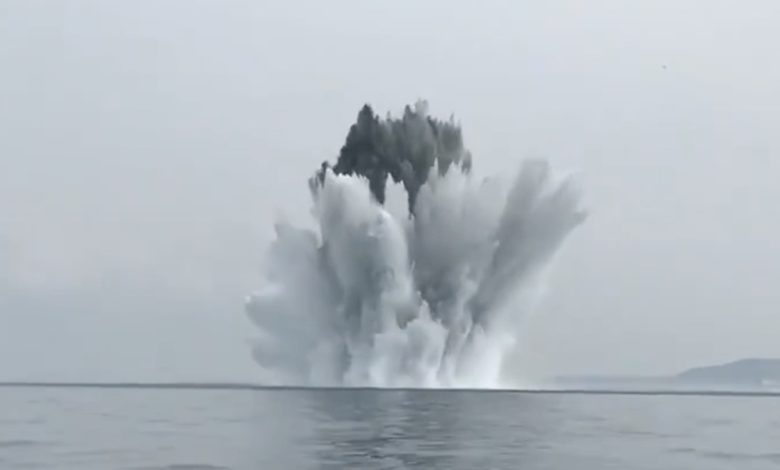How to avoid collateral damage in a mine threat area

Shaun Robertson from UK security firm Palaemon Maritime with advice for international shipping, especially vessels around today’s dangerous Black Sea.
Mines have become an ever-present threat in the Black Sea region due to the ongoing conflict between Russia and Ukraine. This article will cover what damage to expect from a mine and what measures can be taken to avoid hitting one or minimising loss of life.
The purpose of a mine is to act as an explosive booby trap which ships will hit and be sunk. They are cheap and easy to lay by military and civilian assets alike, with the cost of laying one 0.5-10% cheaper than removing it. Moreover, the psychological effect of mines can be devastating, causing fear when sailing through areas or making ships think a far larger area is mined when it is not. They come in various types with different detonation effects, buoyancy, and moving effects. Most commonly, they are attached to the sea floor with a steel cable and sit just below the water’s surface. They are still a favoured tool of militaries worldwide, having been used for centuries in various forms.
It is not the direct explosive effect of a mine that causes the most damage but the shockwave and resulting gas bubble which cracks a ship’s hull. When a mine is detonated, the initial explosive blast can damage hulls, but this damage pales in comparison to the resulting shockwave. The shockwave can severely damage the hull resulting in a crack which is then exposed by a gas bubble. The bubble expands and is then decompressed by the surrounding water pressure, and the process repeats until the energy is dissipated. During this time, the damage caused by the explosion and shockwave can cause cracks in the hull to be agitated, resulting in ships splitting apart and sinking. This damage is enough to sink even the most armoured vessels, which is why navies so favour mines today.
If you find yourself in an MTA (Mine Threat Area), you can take steps to minimise potential loss of life and chances of hitting one. Ships should avoid waters with a depth of less than 200 m, with high water being more favourable due to more distance being put between the mine and the ship. Steering speed should be low to avoid loud noises and large sections of the vessel being swung out, increasing the space in which a mine can be struck. The Master should pay attention to the acoustics on the ship as these set off certain types of mines. Non-essential machinery, human voices and acceleration should be limited to a minimum. Below the deck of the ship, where most damage will be, should be watertight as far as possible, and the crew should only be there if absolutely necessary. When on deck, helmets and life jackets should be worn at all times. If sailing with other ships, follow directly on and do not change course as if walking behind a person on a minefield on land. Nothing should be thrown overboard to prevent acoustic noise and other ships from mistaking items such as mines. Vessels should avoid anchoring in an MTA at all costs, but if it must happen, the Master should be aware of potential acoustic and magnetic signatures this would let off. It is also essential that the ship’s AIS (Automatic Identification System) be left on at all times.
If a mine is spotted, the Captain must prepare the crew in case of an impact. If the ship is about to be hit, then the Master should command, “brace for shock”, but only if there is an immediate threat, as the crew cannot hold this alert status indefinitely. Everyone should be evacuated from the lower decks.
Overall, mines are devastating naval weapons that can cause collateral damage to civilian shipping and military targets. While shipping companies can do little to armour a ship against such catastrophic power, Masters can take steps to reduce the risk of running into one and reduce the potential loss of life if the worst-case scenario occurs.
